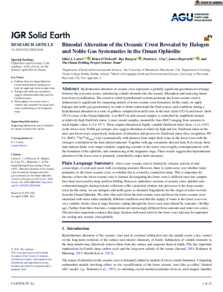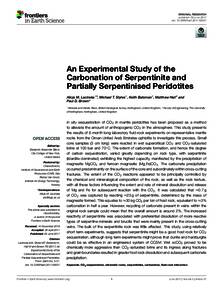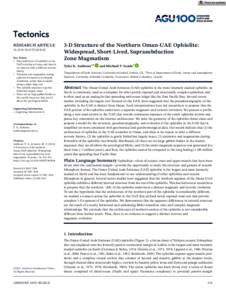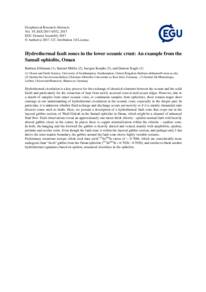Document
Bimodal alteration of the oceanic crust revealed by halogen and noble gas systematics in the Oman ophiolite.
Identifier
DOI: 10.1029/2021JB022669
Source
Journal of Geophysical Research: Solid Earth. v. 127, 1, e2021JB022669
Contributors
O’Driscoll, Brian. , Author
Burgess, Ray. , Author
Clay, Patricia L. , Author
Hepworth, James., Author
Country
United States.
City
New Jersey
Publisher
John Wiley and Sons Inc.
Gregorian
2022-01-01
Language
English
English abstract
Hydrothermal alteration of oceanic crust represents a globally significant geochemical exchange between the crust and oceans, introducing volatile elements into the oceanic lithosphere and removing latent heat from crystallization. The extent to which hydrothermal systems penetrate the lower oceanic crust is debated and is significant for competing models of lower oceanic crust formation. In this study, we apply halogen and noble gas geochemistry in order to better understand the fluid sources and conditions during a hydrothermal alteration in a suite of gabbros sampled from drill cores in the mid- (hole GT3A) and lower- (hole GT1A) crust of the Oman Ophiolite. Low Br/Cl in mid-crustal samples is controlled by amphibole formed at relatively high fluid/rock ratios. Lower crustal samples, meanwhile, have Br/Cl ranging from seawater to much higher values (5 × 10−3). These require alteration at highly variable fluid/rock ratios from ∼1 to 0.01 in the lower crust. Noble gas isotopes also suggest alteration at relatively high and low fluid/rock ratios in the mid- and lower-crust, respectively. Indicators of alteration and proxies for fluid/rock ratios (loss on ignition, Pb/Ce, Br/Cl, 40Ar/36Ar96Ma) vary systematically with distance from major fault zones in the lower crust with the strongest correlation in the least altered minerals. Together with age constraints derived from K-Ar decay, these data indicate faults were major conduits, supplying seawater to the lower crust roughly contemporaneous with the formation of the ophiolite, and commencing at the magmatic stage. These results suggest that hydrothermal alteration of the lower crust is primarily controlled by major fault structures.
ISSN
2169-9313
Category
Journal articles




